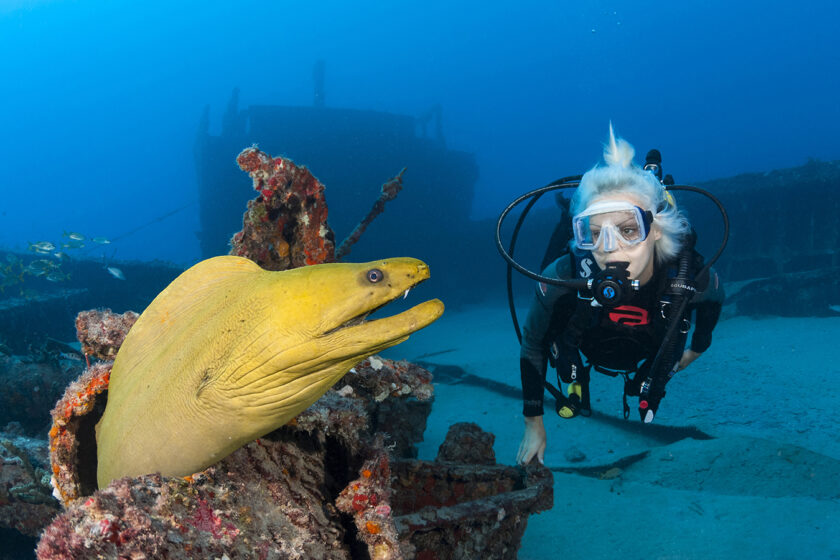You may not be a professional underwater photographer, and your dive buddy is certainly not a professional model. As the expression goes, sometimes you have to work with what you have.
Here I will share 10 Simple Tips for taking more captivating underwater photos of your dive buddy.
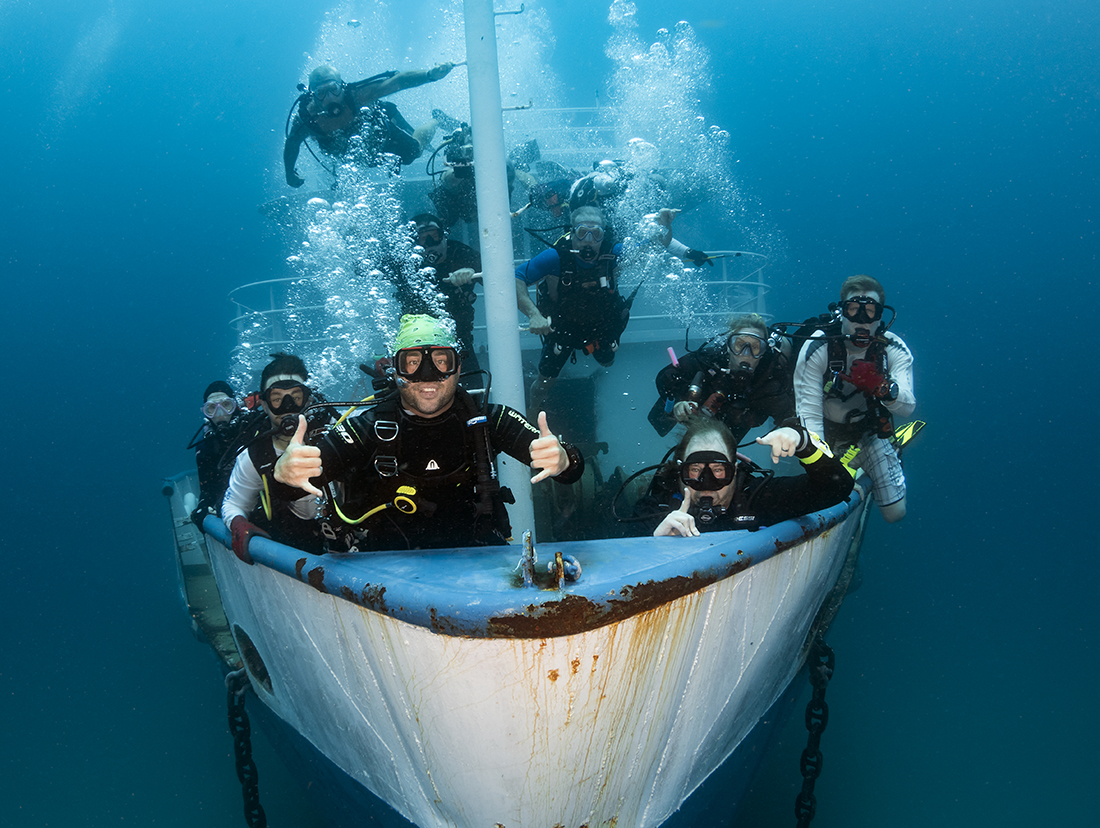
For better or worse, we live in the age of the ubiquitous selfie and the constant need to be on social media. We scuba divers are not immune. As such, more and more divers pose for underwater hero shots during their dive vacations. While you might be thrilled by any image showing your mask-shrouded mug in pixilated form, you’ll get more likes and shares if you and your dive buddy work together to create better underwater portraits.
To help, we’ve come up with 10 simple tips for shooting your dive buddy. And it doesn’t matter whether you are working with a smartphone or a point-and-shoot like a TG6 in a waterproof case or a high-end system in a $5,000 housing, because the principles remain the same.
1. Make a Plan – Before hitting the water, you and your buddy need to mutually decide on a game plan for the dive. Agree on a few simple but effective hand signals such as: go up, down, swim towards me, hold position, swim level or stop flailing your arms. Shoots will go smoother and faster when the two of you are in sync, not to mention being better prepared when something really cool shows up like a friendly grouper, sea turtle, or shark.
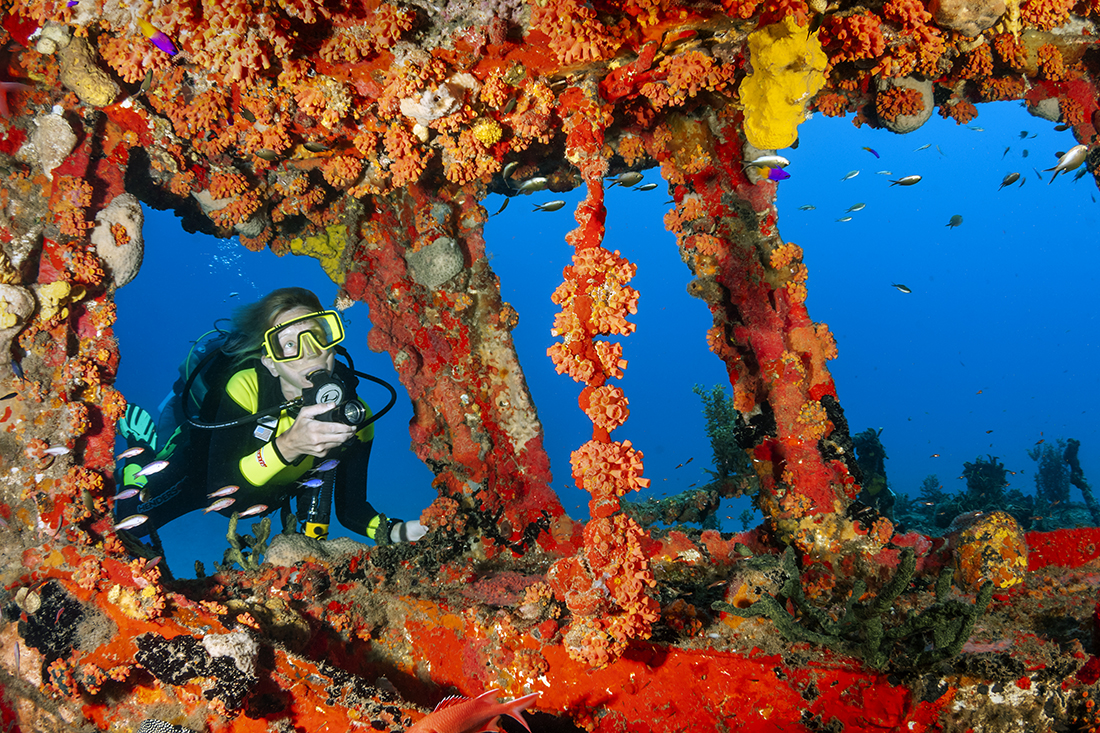
2. Tuck the Dangles — Work as a buddy team to clean up each other’s act by tucking away dangling hoses and adjusting the BC for the most streamlined position possible. Not only does this make the model look good for the camera, it can also make a difference in the photographer’s ability to move about without banging into things.
3. Stay off the Bottom — Unless you are kneeling in the sand for a shark feed, posing for an underwater photo should not be a contact sport. Most divers find it easier to hold position off the reef if they are moving, so you may want to set yourself up for the shot and have your buddy fin slowly past the camera. Proper weighting will keep them from having to over-inflate the BC, which could leave them looking like the Michelin Man.
4. Level Out — Unless you are intentionally trying for an artsy silhouette of a diver passing overhead, it’s best to have the camera at the same level as your subject. This is the perspective that is most familiar to viewers, and most flattering to the human form. If the background is quite cluttered, you can get away a slight upward angle to put blue water in the background.
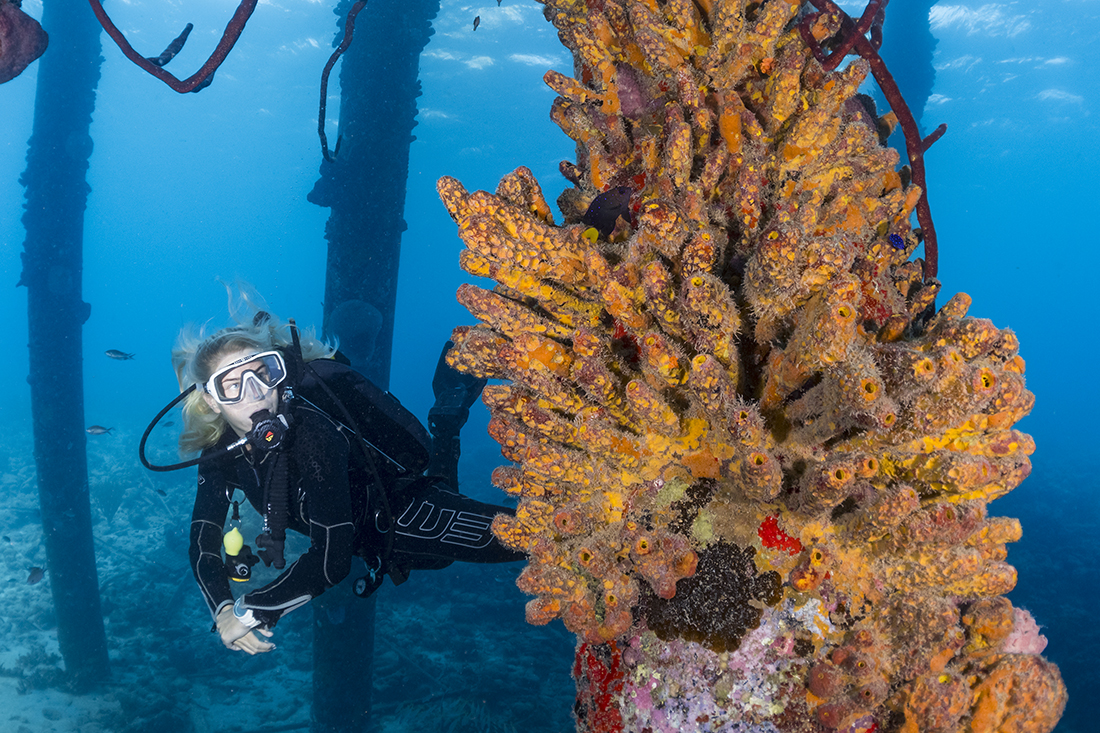
5. Do the Horizontal Hover — Have your dive buddy strike a horizontal pose. This will not only fit them nicely into the rectangular spaces of the image, it avoids the weird perspectives that sometimes result from upright body positions. It also makes your buddy look like an accomplished master of buoyancy.
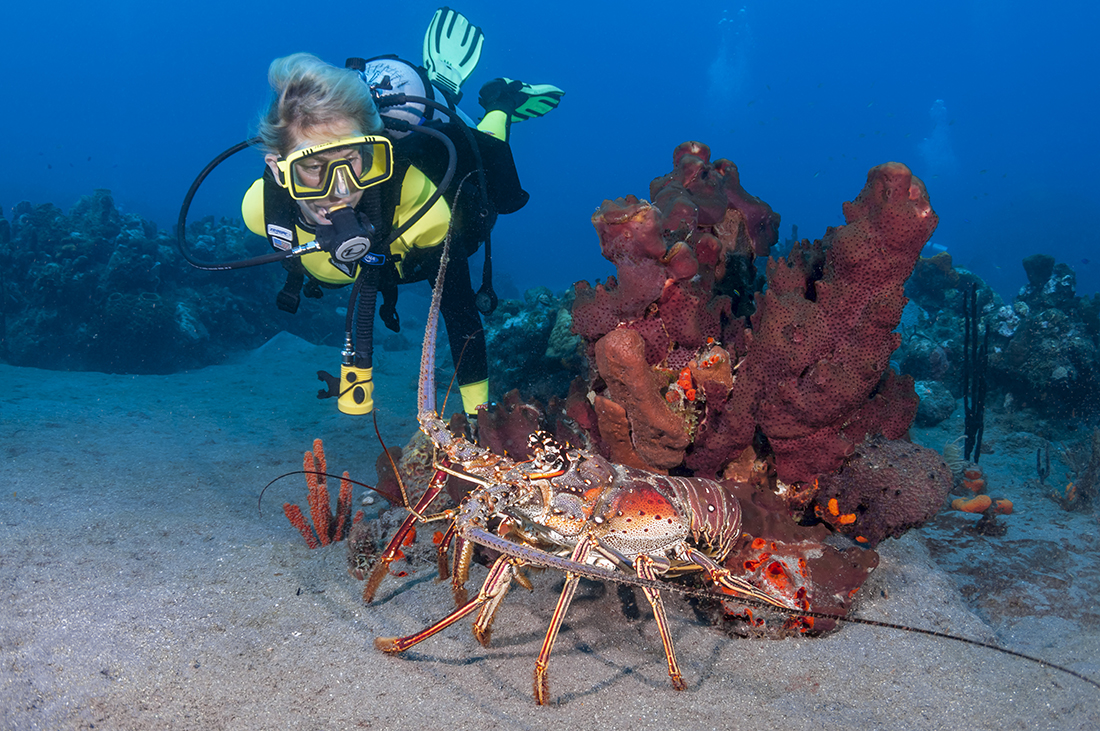
6. Don’t Look at the Lens — While you don’t want to showcase the side of your dive buddy’s head, you also don’t want them staring right into the camera lens. For a much more interesting shot, have them looking slightly off to the side — especially if there is something of interest in the shot. This will still put their eyes in the shot, just not staring right at the viewer.
7. Fill-the-Frame — Whether trying for a headshot or a photo that shows your buddy exploring the reef, don’t leave dead space around the subject. Novice shooters often stay too far from the subject, so pay attention to the display, and leave only a moderate amount of open space around the subject.
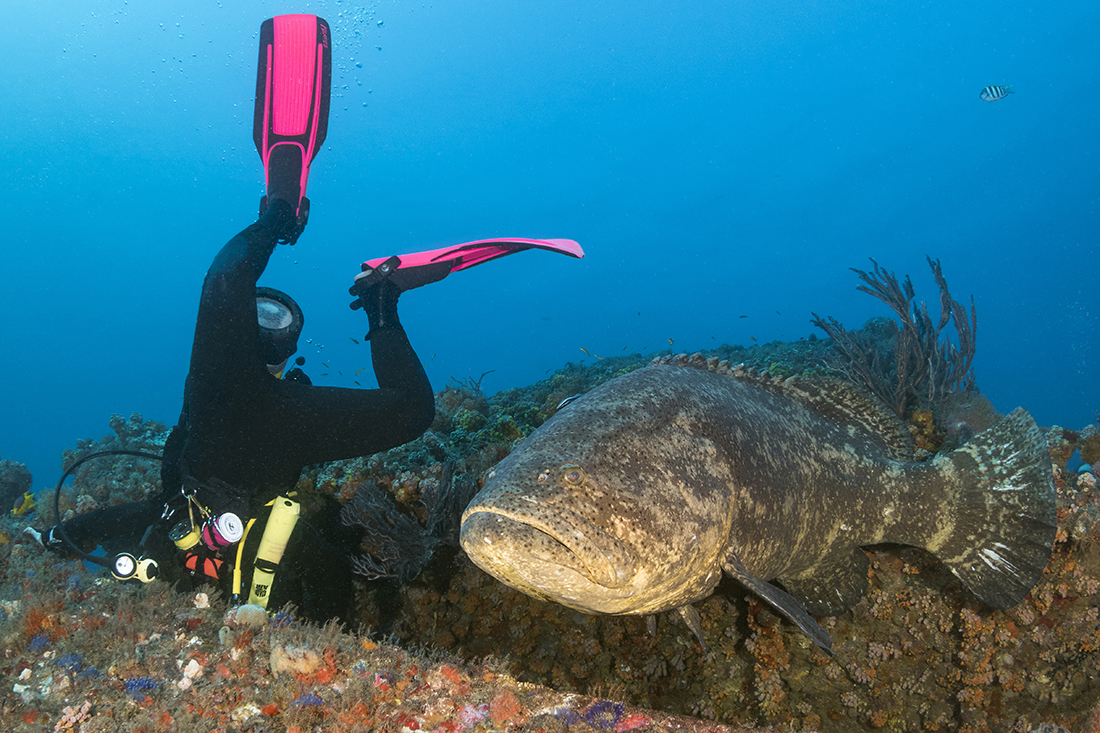
8. Time the Bubbles — Nothing ruins a portrait quicker than a cloud of exhaled bubbles obscuring the subject’s face. Rather than ask your buddy to hold their breath, encourage them to establish a regular breathing pattern that allows you to anticipate and avoid shooting when they are exhaling.
9. Stay on the Sunny Side — Be aware of the position of the sun. This is especially important if your camera does not have a very strong flash or no flash at all. To get the most out of the shot, try to keep the sun someplace behind you, preferably over your shoulder so your dive buddy’s face is lit from the front or side. And if you have an on-camera flash, it’s best to turn it the power down some so it does not wash out the diver’s face and create unsightly backscatter. If the light is low, wait and shoot closer to the surface.
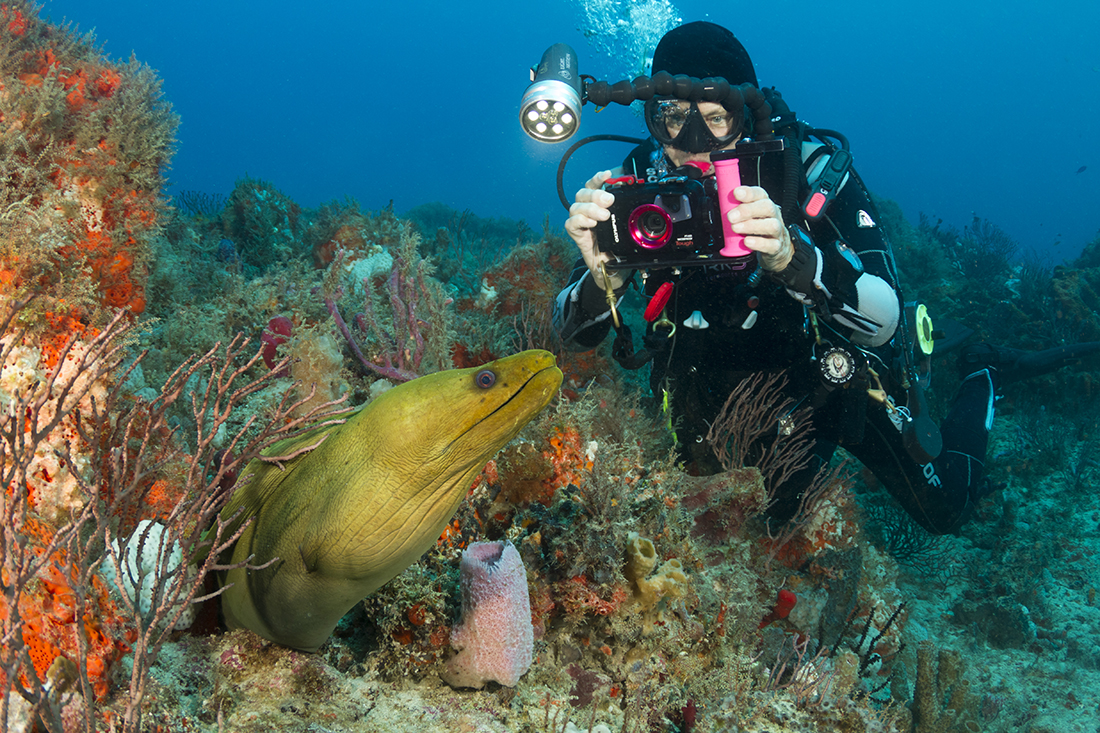
10. My last tip is the most important of them all: the object is to have fun. You’re not on a photo assignment for a magazine or big ad agency, it’s you and your dive buddy or significant other on vacation. Yes, having your pictures convey the experience is a great keepsake, but getting too caught up in trying for perfection can take the fun out of the dive.

